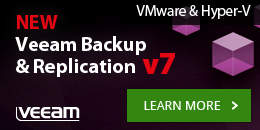VSAN Launch webinar replay
VMware Communities Roundtable Podcast 269 – #VSAN
Key Links
VMware Virtual SAN Now Available (VMware Company Blog)
The Dawn of Virtual SAN (VMware CTO Blog)
vSphere 5.5 Virtual SAN requirements (2058424) (VMware KB)
Virtual SAN Hardware Compatibility Guide (VMware.com)
Virtual SAN Hardware Quick Reference Guide (VMware.com)
VMware Virtual SAN Ready Nodes (VMware.com)
VMware Virtual SAN Datasheet (VMware.com)
VMware Virtual SAN Design & Sizing Guide (VMware.com)
VMware Virtual SAN Sizing Tool (VMware.com)
Virtual SAN 5.5 Validation Guide (VMware vSphere Blog)
VMware VSAN Interactive Product Walkthrough (VMware.com)
VMware Virtual SAN Diagnostics and Troubleshooting Reference Manual (VMware Tech Paper)
What’s New in VMware Virtual SAN (VSAN) (VMware Tech Paper)
The Best Infrastructure for OpenStack: VMware vSphere and Virtual SAN (VMware Tech Paper)
Some good VSAN related KB articles that you should read (vSphere-land)
Hands-On Lab
HOL-SDC-1308 – Virtual SAN (VSAN) and Virtual Storage Solutions (VMware HOL)
VMware VSAN Documentation
vSphere 5.5 Update 1 Storage Documentation (VMware.com)
vSphere 5.5 Update 2 Storage Documentation (VMware.com)
vSphere 5.5 Update 1 Troubleshooting Documentation (VMware.com)
ESXi 5.5 Update 1 Release Notes (VMware.com)
ESXi 5.5 Update 2 Release Notes (VMware.com)
vCenter Server 5.5 Update 1 Release Notes (VMware.com)
vCenter Server 5.5 Update 1 Release Notes (VMware.com)
Ready Node and Ready Block Recommended Configurations (VMware.com)
Beta Community Docs
VSAN Public Beta Registration (VMware.com)
VSAN Public Beta Program Community Site (VMware.com)
Virtual SAN (VSAN) Beta Technical FAQ (VMware.com)
Virtual SAN (VSAN) Proof of Concept (POC) Kit (VMware.com)
Proof Of Concept Guide for Virtual SAN (VMware.com)
Virtual SAN (beta) POC Pre-checklist v1.0a (VMware.com)
Virtual SAN (beta) POC Post-checklist v1.0a (VMware.com)
Virtual SAN Beta – Introduction (webinar slides) (VMware.com)
vSphere 5.5 Virtual SAN Public Beta Release Notes (VMware.com)
Virtual SAN Performance Webcast Final_121013.pdf (VMware.com)
VMware Virtual SAN Quick Monitoring & Troubleshooting Reference Guide (VMware.com)
VMware vSphere 5.5 Virtual SAN Hosted Beta (Lab Guide) (VMware.com)
Configuration/Management
Additional steps required to completely disable VSAN on ESXi host (Virtually Ghetto)
Why you should rename the default VSAN Datastore name (Virtually Ghetto)
VMware VSAN – Virtual SAN – How to configure (Virtual-blog)
Configure Disk Redundancy VMware VSAN – Virtual SAN (Virtual-blog)
I created a folder on my VSAN datastore, but how do I delete it? (Yellow Bricks)
Be careful when defining a VM storage policy for VSAN (Yellow Bricks)
Initialized disks to be used by VSAN task completed successfully, but no disks added? (Yellow Bricks)
How do you know where an object is located with Virtual SAN? (Yellow Bricks)
Cormac Hogan Series
VSAN Part 1 – A first look at VSAN (Cormac Hogan)
VSAN Part 2 – What do you need to get started? (Cormac Hogan)
VSAN Part 3 – It is not a Virtual Storage Appliance (Cormac Hogan)
VSAN Part 4 – Understanding Objects and Components (Cormac Hogan)
VSAN Part 5 – The role of VASA (Cormac Hogan)
VSAN Part 6 – Manual or Automatic Mode (Cormac Hogan)
VSAN Part 7 – Capabilities and VM Storage Policies (Cormac Hogan)
VSAN Part 8 – The role of the SSD (Cormac Hogan)
VSAN Part 9 – Host Failure Scenarios & vSphere HA Interop (Cormac Hogan)
VSAN Part 10 – Changing VM Storage Policy on-the-fly (Cormac Hogan)
VSAN Part 11 – Shutting down the VSAN cluster (Cormac Hogan)
VSAN Part 12 – SPBM extensions in RVC (Cormac Hogan)
VSAN Part 13 – Examining the .vswp object (Cormac Hogan)
VSAN Part 14 – Host Memory Requirements (Cormac Hogan)
VSAN Part 15 – Multicast Requirement for networking – Misconfiguration detected (Cormac Hogan)
VSAN Part 16 – Reclaiming disks for other uses (Cormac Hogan)
VSAN Part 17 – Removing a Disk Group from a Host (Cormac Hogan)
VSAN Part 18 – VM Home Namespace and VM Storage Policies (Cormac Hogan)
VSAN Part 19 – Common VSAN Configuration Gotchas (Cormac Hogan)
VSAN Part 20 – VM Swap and VM Storage Policies (Cormac Hogan)
VSAN Part 21 – What is a witness? (Cormac Hogan)
VSAN Part 22 – Policy Compliance Status (Cormac Hogan)
VSAN Part 23 – Why is my Storage Object Striped? (Cormac Hogan)
VSAN Part 24 – Why is VSAN deploying thick disks? (Cormac Hogan)
VSAN Part 25 – How many hosts needed to tolerate failures? (Cormac Hogan)
VSAN Part 26 – Does Disk Size Matter? (Cormac Hogan)
VSAN Part 27 – VM Memory Snapshot Considerations (Cormac Hogan)
VSAN Part 28 – RVC login difficulties (Cormac Hogan)
VSAN Part 29 – Cannot complete file creation operation (Cormac Hogan)
VSAN Part 30 – Difference between Absent and Degraded (Cormac Hogan)
VSAN Part 31 – Object compliance and operational status (Cormac Hogan)
VSAN Part 32 – Datastore capacity not adding up (Cormac Hogan)
VSAN Part 33 – Some common misconceptions explained (Cormac Hogan)
VSAN Part 34 – how many disks are needed for stripe width (Cormac Hogan)
VSAN Part 35 – Considerations when dynamically changing policy (Cormac Hogan)
Design Considerations
Of Software-Defined Storage and HCLs (Chuck’s Blog)
My completely ridiculous VSAN test (Gabe’s Virtual World)
My VSAN Nightmare (Reddit)
Root cause analysis of my VSAN outage (Reddit)
Checking hardware recommendations might prevent VSAN nightmare (UP2V)
About VSAN capacity and VMDK placement (viktorious.nl)
VMware Virtual SAN Scalability Limits – VSAN (Virtual-blog)
STO5027 VMware Virtual SAN Technical Best Practices (virtualarchitect.nl)
Virtual SAN Hardware Guidance Part 1 – Solid State Drives (VMware vSphere Blog)
Virtual SAN Hardware Guidance Part II – Storage Controllers (VMware vSphere Blog)
Virtual SAN – Sizing Considerations (VMware vSphere Blog)
VSAN and Storage Controllers (VMware vSphere Blog)
Virtual SAN & Disk Groups (VMware vSphere Blog)
Three Hosts, two VSAN Datastores! (VMware vSphere Blog)
VMware Virtual SAN: Cross Cluster Migrations (VMware vSphere Blog)
Do You Need Hardware Guidance to Accelerate Your Virtual SAN Deployment? (VMware vSphere Blog)
Designing your hardware for Virtual SAN (Yellow Bricks)
VSAN HCL more than VSAN-ready nodes (Yellow Bricks)
Selecting a disk controller for VSAN using the HCL (Yellow Bricks)
Building a hyper-converged platform using VMware technology part 1 (Yellow Bricks)
Building a hyper-converged platform using VMware technology part 2 (Yellow Bricks)
Building a hyper-converged platform using VMware technology part 3 (Yellow Bricks)
VSAN and the AHCI controller (hint: not supported!) (Yellow Bricks)
Virtual SAN and Network IO Control (Yellow Bricks)
How VSAN handles a disk or host failure (Yellow Bricks)
Virtual SAN and Data Locality/Gravity (Yellow Bricks)
VSAN Design Consideration: Booting ESXi from USB with VSAN? (Yellow Bricks)
Isolation / Partition scenario with VSAN cluster, how is this handled? (Yellow Bricks)
VMware vSphere Virtual SAN design considerations… (Yellow Bricks)
Virtual SAN GA update: Flash vs Magnetic Disk ratio (Yellow Bricks)
Virtual SAN Read IO – cache / buffer / spindles (Yellow Bricks)
Pretty pictures Friday, the VSAN edition… (Yellow Bricks)
vSphere Metro Storage Cluster using Virtual SAN, can I do it? (Yellow Bricks)
How about an All Flash Virtual SAN? (Yellow Bricks)
vSphere HA and VMs per Datastore limit! (Yellow Bricks)
VSAN – Misconfiguration Detected (Yellow Bricks)
30K for a VSAN host @theregister? I can configure one for 2250 USD! (Yellow Bricks)
4 is the minimum number of hosts for VSAN if you ask me (Yellow Bricks)
General
Essential Virtual SAN (VSAN): Administrator’s Guide to VMware VSAN (Safari Books Online)
Five Reasons Why VSAN Is Different (Chuck’s Blog)
Considering VSAN (Chuck’s Blog)
Using VSAN with Storage Arrays (Chuck’s Blog)
Virtual SAN (VSAN) Announcement Review (Cormac Hogan)
VSAN and vSphere Replication Interop (Cormac Hogan)
VSAN & VDP Interop (Cormac Hogan)
VSAN and vCenter Operations Interop (Cormac Hogan)
My VSAN session from the 2014 Nordics VMUG (YouTube) (Cormac Hogan)
Tips for a successful VSAN Proof of Concept (Cormac Hogan)
What about VSAN for SMB/SME? (DefinIT)
VMware VSAN has arrived! (DiscoPosse)
VMware VSAN Technical Notes (EckTech)
VMware VSAN Video (ESX Virtualization)
VMware Virtual SAN (VSAN) Launch and Configuration Maximums (ESX Virtualization)
VMware Virtual SAN (VSAN) 1.0 GA – FAQ, Pricing and Design Options (ESX Virtualization)
Why I love VSAN! (Frank Denneman)
Is VSAN more affordable? (Hans Deleenheer)
VSAN Clustering – Fact Check Update! (Hans Deleenheer)
VMware VSAN Launch Q&A (Ivobeerens.nl)
VMware’s new VSAN – What Matters (Keith Norbie)
VMware VSAN will be GA in the week of March 10. Licensing per socket or desktop (UP2V)
VMworld 2013: What’s New in 5.5 – vSAN (Mike Laverick)
VMworld 2013: What’s New in VSAN 1.0 (Mike Laverick)
VSAN is here: Hurray ! and NOFUD was used! (Paul Meehan)
What Roles Do Storage Profiles Play in VMware Virtual SAN Storage? (Petri)
VMware releases vSphere 5.5 U1 (SnowVM)
VSAN: A Giant Leap… Upwards? (Stu Radnidge)
VSAN – The Unspoken Truth (Technodrone)
VMware Virtual SAN (VSAN) is now available for download. Licensed per CPU or user (UP2V)
vSphere 5.5 VSAN, Introducing Your New Storage Vendor VMware (vClouds)
vSphere 5.5 Update 1 released to include VMware VSAN (vClouds)
VSAN Pricing (vClouds)
The Significance of VMware VSAN (vDestination)
VMware VSAN: revolution, evolution or reinventing the wheel? (vInfrastructure Blog)
A few thoughts and opinions on VSAN and Hyperconvergence (Virtual Geek)
VMware VSAN cements changes coming to the data center (Virtualization Admin)
VSAN Pricing Comparison (Virtualization Practice)
Working with VMware’s Virtual SAN (Virtualization Review)
VMware VSAN – 5 Reasons It’s Unique: Video Interview, Pricing, Slide Deck, & VSAN Links (Virtualization Software)
VSAN all things! (Virtxpert)
VMware Communities Roundtable Podcast – 251 – VSAN (VMware.com)
VMware vSAN on Open Compute (VMware Admins)
Virtual SAN: Powerfully Simple and Simply Powerful (VMware CTO Office)
Virtual SAN VM Density Contest Results! (VMware vSphere Blog)
Get Ready for Virtual SAN Ready Node and Ready Block (VMware vSphere Blog)
Backing up VMs on VSAN with VDP Advanced and Data Domain (VMware vSphere Blog)
VMware Virtual SAN: 32 Node Scale Out Capability (VMware vSphere Blog)
VMware Virtual SAN: Witness Component Deployment Logic (VMware vSphere Blog)
VMware Virtual SAN Interoperability: vCloud Automation Center (VMware vSphere Blog)
VMware Virtual SAN Interoperability: vSphere Replication and vCenter Site Recovery Manager (VMware vSphere Blog)
Myth versus Math: Setting the Record Straight on Virtual SAN (VMware vSphere Blog)
vSAN 1.0 Announcement (VMwaremine)
vSphere 5.5 Availability and VSAN Public Beta (vNinja.net)
VSAN – The Unspoken Future (vNinja.net)
vSphere 5.5 Improvements Part 4 – Virtual SAN (VSAN) (Wahl Network)
In Which I Muse Over VMware’s Virtual SAN Architecture (Wahl Network)
Exploring VMware VSAN Ready Nodes, Per-Socket Pricing, and Design Guides (Wahl Network)
What’s New in vCloud Suite 5.5: Virtual SAN (VSAN) (WoodITWork)
VSAN for ROBO? (Yellow Bricks)
VSAN – The spoken reality (Yellow Bricks)
Virtual SAN GA aka vSphere 5.5 Update 1 (Yellow Bricks)
VMware Virtual SAN launch and book pre-announcement! (Yellow Bricks)
Introduction to VMware vSphere Virtual SAN (Yellow Bricks)
Frequently asked questions about Virtual SAN / VSAN (Yellow Bricks)
Virtual SAN news flash pt 1 (Yellow Bricks)
Home Labs
Homelab Thoughts – VSAN (ESX Virtualization)
Build vSAN vSphere Lab using PowerCLI (Everything Should Be Virtual)
VMware’s VSAN in the Home Lab (Sean Crookston)
DIY converged server software defined storage on a budget using Lenovo TS140 (SYS-CON)
VMware VSAN meets EZLAB (Virtual JAD)
My VSAN home lab configuration (Virtualize Tips)
VSAN – The Migration from FreeNAS (VMexplorer)
Home Lab – Part 4.1: VSAN Home Build (vWilmo)
Home Lab – Part 4.2: VSAN Configuration (vWilmo)
Testing vSphere Virtual SAN in your virtual lab with vSphere 5.5 (Yellow Bricks)
Rebuilding your Virtual SAN Lab? Wipe the disks first! (Yellow Bricks)
Installation
Getting started with Fusion-io and VSAN (Cormac Hogan)
VMware VSAN configuration steps with nested ESXi hypervisors (ESX Virtualization)
My VSAN Journey – Part 1 – The homebrew “node” (ESX Virtualization)
My VSAN journey – Part 2 – How-to delete partitions to prepare disks for VSAN if the disks aren’t clean (ESX Virtualization)
My VSAN Journey Part 3 – VSAN IO cards – search the VMware HCL (ESX Virtualization)
How to Setup and Configure VMware vSAN storage (Petri)
VSAN – Installation (Tim’s IT Blog)
How to create a VMware Virtual SAN Network (Unix Arena)
VSAN: Local disks not showing up? Wipe your disks straight from the ESXi console (Viktorious.nl)
How to quickly setup and test VMware VSAN (Virtual SAN) using Nested ESXi (Virtually Ghetto)
vSphere 5.5 – My 1st VSAN (Hands on Experience) (vTricks)
KnowledgeBase Articles
Retaining virtual machines of Virtual SAN Beta cluster when upgrading to vSphere 5.5 Update 1 (2074147) (VMware KB)
Enabling or disabling a Virtual SAN cluster (2058322) (VMware KB)
Configuring Virtual SAN VMkernel networking (2058368) (VMware KB)
Adding more than 16 hosts to a Virtual SAN cluster (2073930) (VMware KB)
VMware Virtual SAN datastores cannot store host-local and system swap files (2073944) (VMware KB)
Virtual SAN insufficient memory (2071753) (VMware KB)
Collecting Virtual SAN (VSAN) support logs and uploading to VMware (2072796) (VMware KB)
Moving Disk Groups to a New Virtual SAN cluster (2073931) (VMware KB)
Automatic disk claiming does not work as expected if license is applied after enabling VMware Virtual SAN (2073948) (VMware KB)
Virtual SAN node reached threshold of opened components (2071379) (VMware KB)
Enabling or capturing performance statistics using Virtual SAN Observer for VMware Virtual SAN (2064240) (VMware KB)
Network interfaces used for Virtual SAN are not ready (2058521) (VMware KB)
Adding a host back to a Virtual SAN cluster after an ESXi host rebuild (2059091) (VMware KB)
Virtual SAN clustering has been disabled on an ESXi host (2058794) (VMware KB)
Virtual SAN networking experiences connectivity problems (2058529) (VMware KB)
Virtual SAN network redundancy has been reduced (2058530) (VMware KB)
Enabling Virtual SAN on vSphere 5.5 does not create disk groups (2060786) (VMware KB)
News/Analyst
VMware VSAN software-defined storage comes out of beta (Computer Weekly)
As VSAN 2.0 goes beta VMware aims at hyper-converged x86 storage (Computer Weekly)
VMware Poised To Unleash vSAN Storage Tech, But Pricing Still Unclear (CRN)
VMware to launch storage solution VSAN this quarter (CRN)
SimpliVity CEO: We Love VMware And We’re Not Threatened By VSAN (CRN)
VMware To Begin Selling VSAN Next Week, But Still Isn’t Sharing Pricing (CRN)
VMware Details VSAN Pricing: Focus On Simplicity (CRN)
VMware’s Virtual SAN Threatens Traditional Data Storage Models (Enterprise Storage Forum)
Users Line Up For VMware Virtual SAN Storage (Enterprise Tech)
vSAN Pricing: Virtual Storage Costs Like Virtual Servers (Enterprise Tech)
A seismic shift is about to hit the SAN (MicroScope)
Are Server SANs The Future Or Just Hype? (Network Computing)
Server SANs And Healthy Paranoia (Network Computing)
Server SANs: The Dark Side (Network Computing)
How VMware wants to reinvent the SAN (Network World)
The Top 5 Opportunities for VMware EVO:RAIL Partners (Network World)
VMware Virtual SAN shines storage spotlight on VMware, hyper-convergence (SearchVirtualStorage)
Before you buy, be sure you can meet extensive VSAN requirements (SearchVirtualStorage)
Early users found VSAN hardware difficult, management easy (SearchVirtualStorage)
Top five VMware Virtual SAN takeaways of 2014 (SearchVirtualStorage)
Can VMware VSAN offer RAID-like safeguards? (SearchVMware)
Talking about the future of VSAN with Duncan Epping (SearchVMware)
VMware VSAN creating buzz around hyperconverged infrastructure (Silicon Angle)
VMware: Get your hands dirty + build your own VSAN nodes (Silicon Angle)
New CTO offers guidance on VMware software-defined data center (Tech Target)
VMware Offers Virtual SAN for vSphere (Tech Week Europe)
VMware embiggens VSAN to petabyte scale (The Register)
VSAN emerges at a WHOPPING 32 nodes and two MEEELION IOPS (The Register)
VMware wanted to keep its VSAN pricing secret – now it’s all over the web (The Register)
Wanted: Virtual Steve Jobs to tell us one more thing about VSAN (The Register)
VMware drops vSphere 5.5 Update 1 into sysadmins’ laps (The Register)
It’s storage’s HOLY GRAIL: VSANs, PSANs and virtual silos (The Register)
VMware happy for VSANs to work with actual SANs (The Register)
VMware reveals more VSAN nodes (The Register)
Why not build your own VSAN hardware, asks VMware (The Register)
Speedy storage server sales stumps sysadmin scribe: Who buys this? (The Register)
Is Trevor Pott-y? Nope – he’s bang on about VSAN performance (The Register)
VSANs choking on VMware’s recommended components (The Register)
VMware says anyone – not just EMC – can play with its best bits (The Register)
Server SANs: Don’t throw the baby out with the bathwater (The Register)
News: VSAN Is Now GA (Virtualization Practice)
News: VMware VSAN GA Release Ships with vSphere 5.5 Update 1 (Virtualization Practice)
Will Scale-Out Architectures Kill Enterprise Storage? (Virtualization Practice)
VMware Announces Broad Ecosystem Support for VMware Virtual SAN (Wall Street Journal)
VMware (VMW) PT Raised to $124 at Jefferies on vSAN Product (Wall Street Pit)
Cube Conversations – VSAN Thrusts VMware into Server SAN Market (Wikibon)
VMware VSAN vs the Simplicity of Hyperconvergence (Wikibon)
Performance
VMware’s VSAN Benchmarks: Under The Hood (Network Computing)
VMware VSAN Posts 2 Million IOPS (Storage Review)
How to Supercharge your Virtual SAN Cluster (2 Million IOPS!!!) (VMware vSphere Blog)
VMware Virtual SAN Performance Testing – Part I (VMware vSphere Blog)
VMware Virtual SAN Performance Testing – Part II (VMware vSphere Blog)
VMware Virtual SAN Performance Testing – Part III (VMware vSphere Blog)
VMware Virtual SAN Performance Testing – Part IV (VMware vSphere Blog)
VMware Virtual SAN: Performance with Microsoft Exchange Server (VMware vSphere Blog)
Web 2.0 Application Performance on VMware Virtual SAN (VMware Tech Paper)
VMware Virtual SAN Performance with Microsoft SQL Server (VMware Tech Paper)
VDI Benchmarking Using View Planner on VMware Virtual SAN (VSAN) (VMware Vroom)
VDI Benchmarking Using View Planner on VMware Virtual SAN – Part 2 (VMware Vroom)
VDI Benchmarking Using View Planner on VMware Virtual SAN – Part 3 (VMware Vroom)
VDI Performance Benchmarking on VMware Virtual SAN 5.5 (VMware Vroom)
Ruby vSphere Console
VSAN Observer (Punching Clouds)
vSphere 5.5: Using RVC VSAN Observer Pt1 (Punching Clouds)
vSphere 5.5: Using RVC VSAN Observer Pt2 (Punching Clouds)
Manage VSAN with RVC Part 1 – Basic Configuration Tasks (Virten.net)
Manage VSAN with RVC Part 2 – VSAN Cluster Administration (Virten.net)
Manage VSAN with RVC Part 3 – Object Management (Virten.net)
Manage VSAN with RVC Part 4 – Troubleshooting (Virten.net)
Manage VSAN with RVC Part 5 – Observer (Virten.net)
VMware Virtual SAN Observer Offline Mode (VMware vSphere Blog)
How to configure the Virtual SAN observer for monitoring/troubleshooting (Yellow Bricks)
Scripting/Command Line
Using the VSAN Observer in vCenter 5.5 (Erik Bussink)
Creating a VSAN Cluster with PowerCLI (Virtu-Al)
vdq – A useful little VSAN utility (Virtually Ghetto)
VMware VSAN APIs (Virtually Ghetto)
Required ESXi advanced setting to support 16+ node VSAN Cluster (Virtually Ghetto)
Restoring VSAN VM Storage Policies without vCenter Part 1: Using cmmds-tool (Virtually Ghetto)
Restoring VSAN VM Storage Policy without vCenter Part 2: Using vSphere API (Virtually Ghetto)
Exploring VSAN APIs Part 1 – Enable VSAN Cluster (Virtually Ghetto)
Exploring VSAN APIs Part 2 – Query available SSDs (Virtually Ghetto)
Exploring VSAN APIs Part 3 – Enable VSAN Traffic Type (Virtually Ghetto)
Exploring VSAN APIs Part 4 – VSAN Disk Mappings (Virtually Ghetto)
How to bootstrap vCenter Server onto a single VSAN node Part 1? (Virtually Ghetto)
How to bootstrap vCenter Server onto a single VSAN node Part 2? (Virtually Ghetto)
vSphere PowerCLI 5.8 SPBM Walkthrough (Part 1): Introduction (VMware vSphere Blog)
vSphere PowerCLI 5.8 SPBM Walkthrough (Part 2): Creating vSphere Storage Policies (VMware vSphere Blog)
vSphere PowerCLI 5.8 SPBM – Part3: Associating vSphere Storage Policies (VMware vSphere Blog)
vSphere PowerCLI 5.8 SPBM Walkthrough (Part4): Provisioning a new VM (VMware vSphere Blog)
Storage Policies
How to Create VMware vSAN Storage Policies (Petri)
Using VSAN Storage Policies in vCloud Automation Center (Virtual JAD)
Storage Policy Based Management (SPBM) Configuration Maximums (2062751) (VMware KB)
vSphere Storage Policy Based Management Overview (part 1) (VMware vSphere Blog)
vSphere Storage Policy Based Management Overview (part 2) (VMware vSphere Blog)
VSAN Basics – Changing a VM’s storage policy (Yellow Bricks)
Troubleshooting
Virtual SAN Troubleshooting: Multicast (VMware vSphere Blog)
Virtual SAN Troubleshooting: Automating Multicast Configuration (VMware vSphere Blog)
VDI
VSAN with Horizon View Interop (Cormac Hogan)
VMware VSAN Datastores supported on Horizon View 5.3.1 (ESX Virtualization)
How does VMware VSAN help Horizon View? (My Virtual Cloud)
How is Horizon View configured for VMware VSAN? (My Virtual Cloud)
Why is Content-Based Read Cache (CBRC) so important for Horizon View and VSAN? (My Virtual Cloud)
Horizon View 5.3.1 Is Here and Supports VMware Virtual SAN (VMware EUC Blog)
Horizon 6.0 and Virtual SAN: A match made in …… (VMware vSphere Blog)
VMware Horizon with View and Virtual SAN Reference Architecture (VMware Tech Paper)
Horizon View 5.3.1 on VMware Virtual SAN – Quick Start Guide (2073795) (VMware KB)
VMware TV videos
VMworld 2013 session – STO5391 – VMware Virtual SAN (VMware TV)
VMware Virtual SAN Strategy: Storage for the Software-Defined Data Center (VMware TV)
Virtual SAN Beta Webinar – Introduction to VMware Virtual SAN (VSAN) (VMware TV)
Virtual SAN (VSAN) Beta Webinar – How to Install, Configure & Manage (video) (VMware TV)
Migrating Virtual Machines Across VMware Virtual SAN Clusters (VMware TV)
Virtual SAN (VSAN) Setup (VMware TV)
VMware Virtual SAN: Scale Up Storage Capacity (VMware TV)
VMware Virtual SAN: 32 Node Scalability (Scale Out) (VMware TV)
How To Monitor Virtual SAN (VSAN) (VMware TV)
How to Troubleshoot Your Virtual SAN (VSAN) (VMware TV)
Deploying a Virtual Machine on Virtual SAN (VSAN) (VMware TV)
Changing a VM Storage Policy On-The-Fly with VSAN (VMware TV)
Virtual SAN (VSAN) & VM Availability (VMware TV)
Virtual SAN (VSAN) & vSphere HA Interoperability (VMware TV)
VMware Virtual SAN (VSAN) Partner Montage (VMware TV)
Virtual SAN (VSAN) and the End User Computing Use Case (VMware TV)
VMware Virtual SAN Interoperability: OpenStack Framework Integration (VMware TV)
Virtual SAN Interoperability – Planned migration with vSphere Replication and SRM (VMware TV)
DOE Fund has found “The Holy Grail of Storage” using VMware Virtual SAN in New Facilities (VMware TV)
Adobe Systems Improves Internally and Deploys Solutions Faster with VMware Virtual SAN (VMware TV)
Cincinnati Bell Achieves Scalable Cloud Infrastructure & Reduces Costs with VMware Virtual SAN (VMware TV)
Itrica Provides Scalable Cloud Solutions using VMware Virtual SAN (VMware TV)










